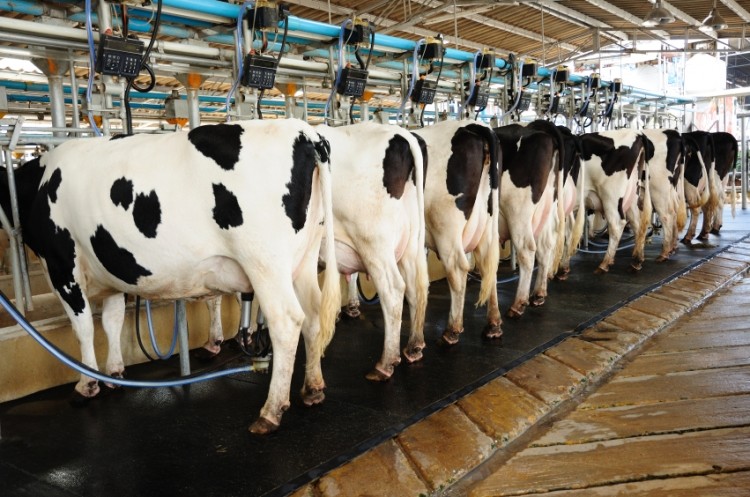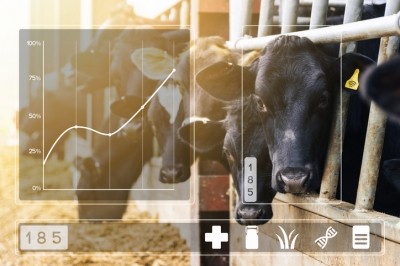Data tool targets reproductive, health, nutritional and wellbeing status of dairy cows

Allflex, the international company behind SenseTime, said it would initially introduce the product in Europe, and, gradually, will expand its reach to other regions and countries.
The company said the program could be integrated into herd management systems and that it delivers heat detection and health insight, providing data-driven, actionable information on the reproductive, health, nutritional and wellbeing status of individual cows and groups.
Ultimately, it said the technology is aimed at more productive farm management and operations.
In terms of nutritional management benefits, an Allfex spokesperson told FeedNavigator a group consistency graph within SenseTime allows monitoring of operational feeding efficiency using the group daily rumination trend.
“Group consistency and routine graphs may also help monitor the overall behavior of the group, including feeding.
“Group heat stress [analysis], based on panting behavior, overplayed with the percentage of cows eating can assist in identifying the number of eating sessions per day per group. A group should have at least three meals per day for avoiding sub-acute rumen acidosis (SARA).”
The monitoring program can include either neck or ear tags – the choice is down to farmer preference. “The ear tags are fast and simple to install, and are designed specifically for a high retention rate.”
The developer added that the technology is simple to install, use and maintain, and is easily upgradable. It is also compatible with multiple user devices from PC to mobile phone to tablet.
Precision livestock farming trend
In February this year, we heard from Professor Daniel Berckmans, who is based at the University of Leuven, about the future for precision livestock farming (PLF) tools.
He led EU PLF, an initiative that kicked off in 2012 and involved partners from both academia and industry. Its final conference was held in October last year.

PLF tools, he said, can benefit farmers by helping to secure improved health, welfare, yields and environmental impact, noting that it is no longer easy to make a living from livestock farming,. “Farmers have to manage a complex situation in balancing feed and energy costs against financial returns on their animals. They are expected to comply with increasingly stricter regulation on animal health and welfare, product quality and environmental impact, while trying to achieve a decent economic return for their efforts.”
Individual attention
As income from individual animals is so low, farmers must keep more animals to achieve a viable return. As a result, there is less time available to attend to individual animals, which makes it more difficult to monitor and manage the animals properly, continued the professor.
There is technology available to measure different parameters on the farm, such as ventilation rate, feed supply and heating and cooling inputs, but few of the tools available up to now have focused on the most important participant in the production process, the animal: “Livestock production today has to follow the personalized medicine trend.”
Efficient control is about prediction, which can be achieved through real time monitoring of weight and response to environmental stressors, and other parameters, he added.
Modern technology makes it possible to place cameras, microphones and sensors sufficiently close that they can replace the farmer’s eyes and ears in monitoring individual animals. The aim of PLF is to combine all the available hardware with intelligent software in order to extract information from a wide range of data, he said.
Scale is always required to reduce costs. For example, the global use of mobile phones has reduced the cost of wireless communication and is pushing this technology into other applications such as PLF.”
The livestock market involves huge numbers of animals and processes, so the potential is there globally to make it possible to produce tailored, applied PLF technology at reduced costs, he added.
Start-ups
“Another important achievement of the project was that it helped develop four start-up companies that are now in the PLF market, and we have also managed to incentivize young people to get involved in the ag sector,” he added.
One of those start-up firms is Ymaging, which among other applications, has developed PigWei - a product based on cloud services for precise, feasible and cost-effective pig weighing. It is said to allow a constant and continuous monitoring of the animal growth in a way it ensures a better management of resources, higher quality of meat and lower costs for farmers.
Another is Connecterra, which was founded in 2014 and is targeted at the dairy farming sector. Its service consists of a wearable device that monitors the herd in real-time and transmits the data to a cloud platform for analysis and prediction of behavioral patterns. This is said to enable farmers to free up labor time, improve milk production per animal and save money by optimizing their breeding cycles.












